Steve Morrisette
 The subject of wristwatches has been on my mind of late and I thought it might be of interest to examine this small corner of the vast horological world.
The subject of wristwatches has been on my mind of late and I thought it might be of interest to examine this small corner of the vast horological world.
Subset of a Subset: Though aviator watches and military type watches are a subset of the larger subset of sports watches, they have fairly recently gained much wider popularity.
I suppose if future 007’s continue the timepiece migration that began with the Rolex Submariner and moved to the Omega Seamaster to say, the Omega "Dark Side of the Moon" Speedmaster, we’ll know that the pilot/aviator watch phase has passed permanently into an established icon and style cue. (The Omega Speedmaster line is the famous "moon watch" – the first wristwatch on the moon.)

Omega Dark Side of the Moon
A few years back I became very interested in men’s wristwatches and began a very modest collection. As is my bent, I threw myself into the subject seeking to learn as much as possible, always with a nose for the finest, the exceptional, the innovative and the creative pieces. And, as usual, I began acquiring pieces of rapidly ascending quality and cost.
Just as with my pipe collecting, I reached a financial ceiling in a hurry. When I found myself seriously considering spending a large sum for a single watch I was able to snap out of my delusional obsession. I realized that walking around with what amounted to a small Lexus on my wrist was, like owning a Ferrari, a lifestyle, not just another purchase. And a lifestyle I did not have. I’d certainly love to admire the fabulous, hand built and exquisite watch on my wrist, but I’d never be at ease about it. Aside from the financial impracticality of wearing a Breguet classique or an A. Lange and Sohne timepiece, I’m sure I would suffer more anxiety than enjoyment wearing such an amazing creation out of the house. And, as I believe all cars should be driven, I also feel that all watches should get a night out now and again.
So, I managed to avoid spending five figures on a watch, just as I did with pipes. Also, I did not become a watchmaker either, a bullet I ( gratefully ) did not dodge when it came to briar.
I want to say here that while I voraciously consumed material about watches, watch collecting and acquiring good pieces, I am miles from claiming authoritative knowledge about any facet of these subjects. There are many folks, pipesters among them, that can quote stats on obscure Swiss movements or have an encyclopedic command of the truly vast catalogue of the output from Seiko, Citizen and Orient. (Incidentally, Seiko and Citizen build some of the finest mechanical watches in the world, as well as the most technologically advanced timepieces available.)
Narrowing focus and getting to the point here, I shall briefly discuss a few aspects of choosing a pilot or aviator watch. Sometimes these are referred to as military or milspec style watches. Some aviator/pilot watches are milspec style, but not all. Just as not all military style watches are suitable for figuring fuel consumption rates or navigational calculations. Mostly here I will look at pilot "style" watches, some of which can indeed be employed in complicated math.
These days many folks wear a timepiece on the wrist as a fashion accessory, or an expression of personal style. Certainly men have used them for ages as their version of women’s jewelry. Many others eschew the wristwatch altogether, using various smart devices for timekeeping. The pilot watch is about having an easily read source of accurate timekeeping instantly available that does not require two hands or even two fingers to tell the time.
The look
To most, an aviator or pilot watch has a certain look that is more or less universal. They are almost always analog with clear hour markers and very readable hands. A minute register is usually present and the vast majority have round dials. The single most distinctive visual cue is a black or dark colored dial and white or contrasting light hands and dial markings. These elements belie the origin of the aviator watch as a tool of requisite simple utility. Many very famous and high quality pilot watches are styled to mimic the look of the black and white dials of early analog aircraft instruments. As far as I know, all pilots love flying and they find a watch that looks like part of the instrument panel to be quite appealing.
Bell and Ross, a well respected maker, build watches that look as though a cockpit clock was literally popped out of the instrument panel and strapped on your wrist. This is a very common style theme that involves all the prominent themes of aviator watches. These are chiefly: no nonsense, utilitarian, purposeful, rugged and definitely masculine.
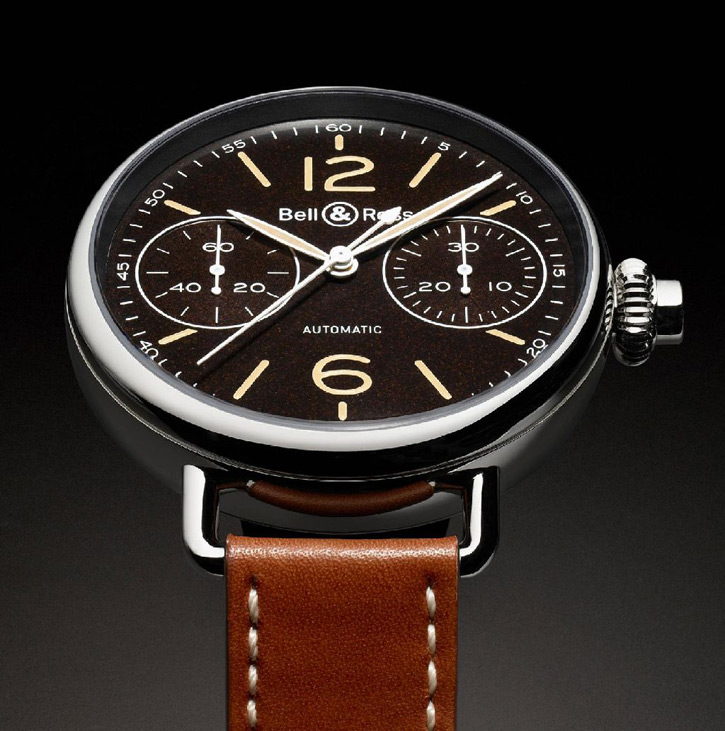
Bell & Ross WWI Chronograph Monopoussoir Replica Watch
Psst … Wanna buy a watch?
Let’s have a quick look at these watches and also some of the considerations in purchasing one.
Watches have several different methods of powering the movement, which is the inner workings of wheels and gears that activate the hands conveying not only the time, but can include the day and date, the year, stop watch functions, power reserve, moon phases, and alarms; sometimes all on the same watch. These are known as complications. Some versions go on to have complex digital functions such as altimeters, air pressure, temperature and GPS positioning. Several have automatic time setting by receiving radio signals from standard atomic clocks like the U.S. Naval Observatory master clock and still others automatically adjust to new time zones via satellite time and GPS signals.
Hand activated slide rule rings can be found on models that I would term "true" pilot watches. As an aside, Casio makes "Wave ceptor" watches that are inexpensive and supremely accurate by receiving a daily time update via radio signal in various areas across the globe.
Movers and Shakers and Eco-drives
The oldest, and many find the most appealing, method of powering a watch is through what is commonly termed a mechanical movement. In such a watch a mainspring is wound either by hand or automatically using a swing weight that transfers wrist motion energy into a winding force. Such automatic watches will remain powered up as long as they are worn or kept on a watch winder – holders that rotate the watch to keep it wound. Some watches, like the Citizen Eco-Drives, use that motion to generate electric current that is then stored in an onboard battery and powers a quartz regulated movement. Quartz regulated movements may use regular button batteries or they may have lithium-ion storage cells powered either by wrist motion (kinetic) or by light (solar).
While I appreciate the beauty and engineering aesthetics represented by purely mechanical watches, a solar powered quartz watch strikes me as the best method of powering a movement. Highly sophisticated versions can "sleep" for months in a dark drawer and "awaken" when moved or exposed to light, all the while "remembering" the correct time, day, date and year. Very practical, yes?
Aviator watches can be found employing all the methods discussed to power their movements. You can take your pick. Just decide what appeals to you and what needs you may have to consider.
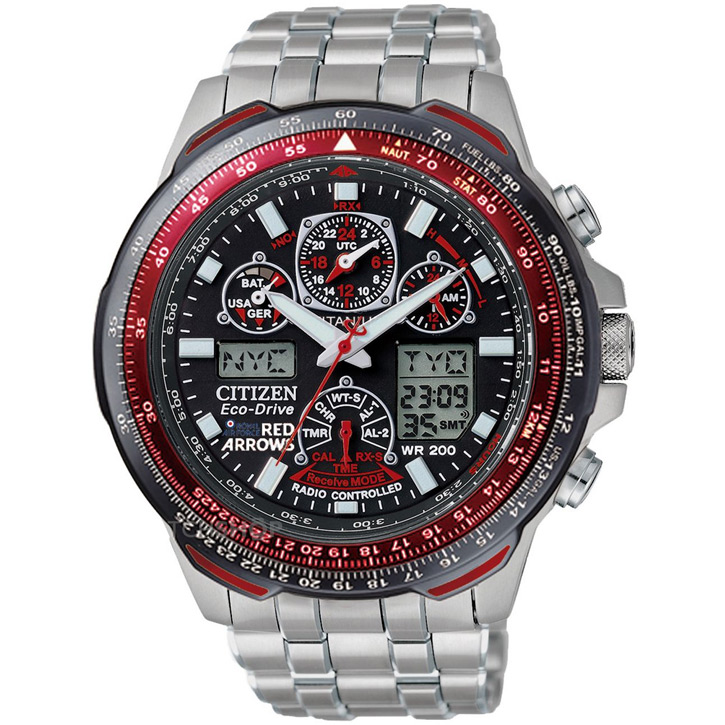
Citizen Eco-Drive
Aviator watches can be very simple with the barest of dial indicators, a matt black face and simple baton or stick hands. Some even lack a second hand. Others may include every function previously mentioned plus indications of international cities for the world traveler. To me, a true pilot’s watch has the functions to allow navigational calculations and fuel consumption rates along with it’s other features.
I, for one, find such watches festooned with various scales, tacheymeter and slide rules crammed up against the time indices and day/date windows to be very difficult to read at a glance. Besides, trigonometry far exceeds the capabilities of my tiny brain.
Classic, Whiz-Bang, or Darth Vader?
Aviators come in a vast array of styles, so finding a type of pilot/aviator watch that you like shouldn’t be difficult. However, deciding between variations of your chosen theme could make you a bit bewildered. Here are three general approaches in style. There are digital/analog offerings with black resin cases and rubber straps. The Casio G-Shock line comes to mind, with their generally huge, multi-level cases that sometimes are difficult to tuck under a shirtsleeve. Many are quite rugged, very accurate and have a plethora of functions and are generally not too expensive. They also are easy to find anywhere from gas station mini-marts to high toned jewelry boutiques.
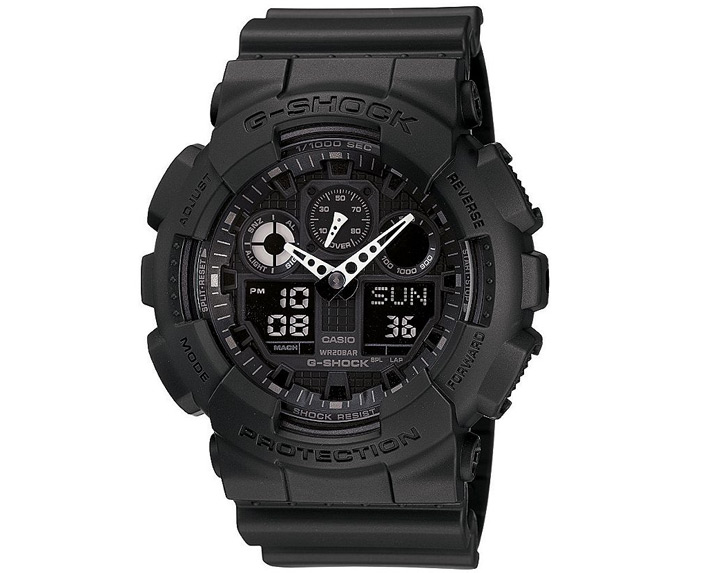
Casio G-Shock

Seiko Astron
There are the classic aviator type watches that really do summon thoughts of planes, pilots and the exotic images of aircraft instrument panels. These watches mean business. Usually round with metal cases and elegantly laid out dial/hand configurations, the classic aviator watch could easily go from the airfield to a dinner engagement.
Some do get rather large and certainly can have busy dials as they gain complications. Case materials can run from conservative polished or brushed stainless steel models through titanium, ceramic black coated finishes and right up into precious metals like gold and platinum. Models are available with several varieties of metal bracelets, nylon Nato style straps, leather, crocodile or alligator bands and even non-allergenic silicone straps.
Somewhere between the black resin, G-Shock type and the sleek classics are models that borrow from both camps. More often than not they are stainless steel with stainless bracelets and usually have at least a few complications. There are those that become feature laden like the Citizen Promaster series. Others are the more classical pilot types and very attractive such as many of the Breitling watches.
Grouped within this middle is where I would place the true pilot watches with all their mathematical functions and various scales , indices and other complications. Again such traditional pilot models like the Breitling Navitimer and the Seiko Flightmaster are in this group.
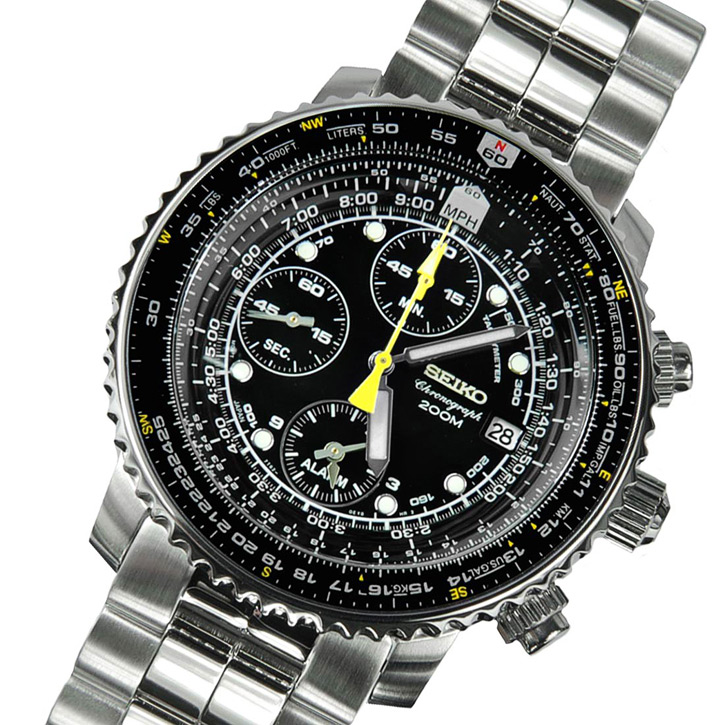
Seiko Flightmaster

Breitling Navitimer
The Crux of the Matter
Speaking of complications, making various choices and decisions involved in buying an aviator watch could be daunting if one does not make some basic and categorical choices out of the gate, or, er … hangar.
If you know what you want as defined by your needs and tempered with your desires, you should be able to draw a fairly well defined, if not impermeable box around the nearly endless combinations of options and features of these marvelous machines.
Now, a List
I love lists when gathering information on a dear subject, so I’ll present a few here with many of the features and options available with aviator watches. Some of these will be essential to your needs and many may create allure to stimulate your desires. Sensual language to be sure, though many a man, and a good deal of the ladies, find these little, and not so little timepieces sexy, or at least appealing to the sensual side of their natures. These lists are not all inclusive.
Case materials:
Stainless Steel, Titanium, Resin, Ceramic, Precious metal plating and "solid" precious metal. Some marques also make their own proprietary alloys.
Case finishes:
Polished and brushed, combined and sandblasted Stainless Steel, precious metal plating, Cerakote, PVD, IP plating and various trade name treatments like Duratec, Diashield and Super Titanium.
Crystal materials:
Plastic, Mineral crystal, Synthetic sapphire and exclusive crystals like Hardlex (Seiko) and Hesalite (Omega)
Watch straps and bracelets:
Bracelets constructed from all of the above case materials. Straps are available in leather, Nylon, Velco, and exotics like Crocodile, Alligator, String ray and Ostrich, all with various clasps and buckle combinations.
Features and complications:
Chronograph, Day, Date, Second time zone, Power reserve, Slide rule, Tachymeter, movable bezels, alarms, perpetual calendar, moon phase, equation of time, flyback chronograph, GMT ( Greenwich Meantime or International time), world time zone, altitude, air pressure, temperature, GPS, atomic time and auto time zone.
"The Crux of the Biscuit"
Frank Zappa used this phrase, I believe, to allude to the notion that reality can only be defined by the context of the discussion. What is present, or included, will create the parameters of the reality.
Well, given the numerous aspects, variations and functions of watches – aviators included – the question is: What do you want?
One might think that this is the first question to ask, but I contend that without some fairly thorough knowledge of what is available, the question cannot be answered in a truly satisfactory manner.
As I said, most folks today wear a watch because they like watches. Smart devices have supplanted watches for so many. So style and preferences again become factors in our discussion. I can only say what I value and seek in an aviator style watch and these are my criteria in loose priority:
1). Quick and easy readability of the time and date
2). A comfortable size and fit
3). An attractive and generally symmetrical design
4). A stainless steel case
5). Durability
6). Solar power
7). Luminescent hands and indices
8). At least 100 meters of water resistance
9). A metal, matching bracelet
10). A sapphire crystal
I have many other less crucial preferences such as the style of the hands, type of bracelet links, the type of lume used and the presence or lack of decoration, and others.
The ten items I listed comprise my personal list of qualities and features that are the keys to finding the right aviator for me. Your list may look very different and longer or much shorter.
I must say there are at least a dozen or so well made aviators in my price range that fit my criteria and some go well beyond my top ten list, but my list has significantly narrowed the field and thus facilitates making a choice that quite likely will result in choosing a watch I will be pleased to own and wear.
We all need a Friend
The thing about a watch these days is that given that you wear the thing next to your skin, look at it often and perhaps depend on it to do it’s job well, making a good choice is more important than it first appears. A sweater that ends up a disappointment can be given away or exiled to the back of a closet. Assigning the same fate to a watch that can set you back anywhere from a hundred or so dollars to a couple of grand or more is not a pleasant prospect. Nor is it practical, even if the watch itself is more for style than utility.
As I am a true watch aficionado, I wish to leave you, fine readers, with some examples in various styles and price ranges that I think merit attention. (notice how I worked in yet another list here?)
Affordable, no nonsense watches to do the job well, look good and are known to be durable:
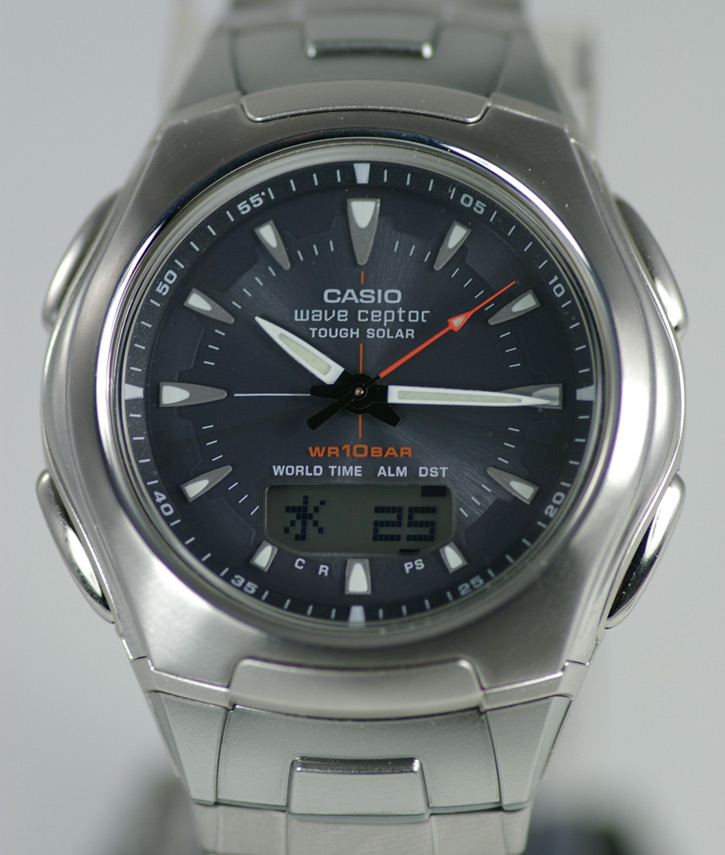
Casio Wave Ceptor
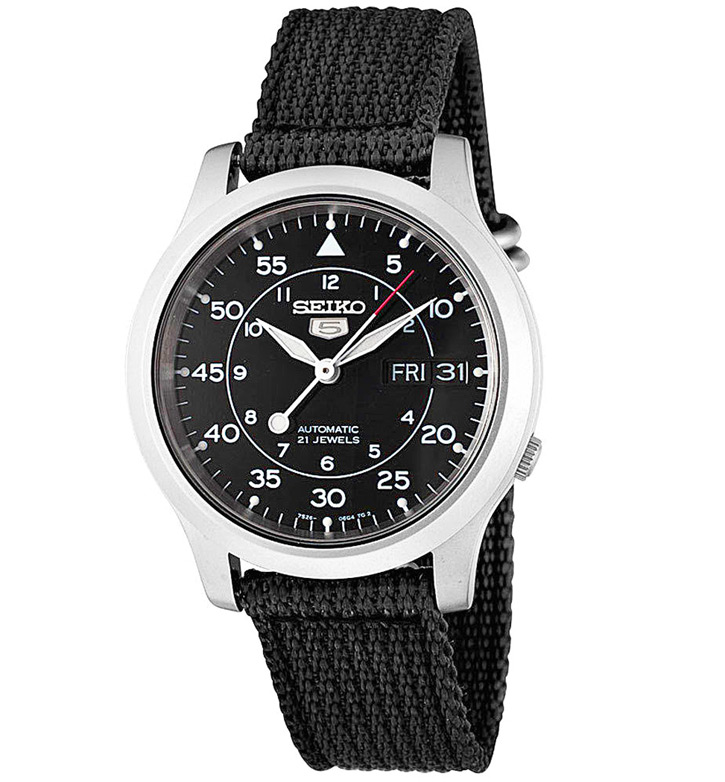
Seiko 5 #snk809k2
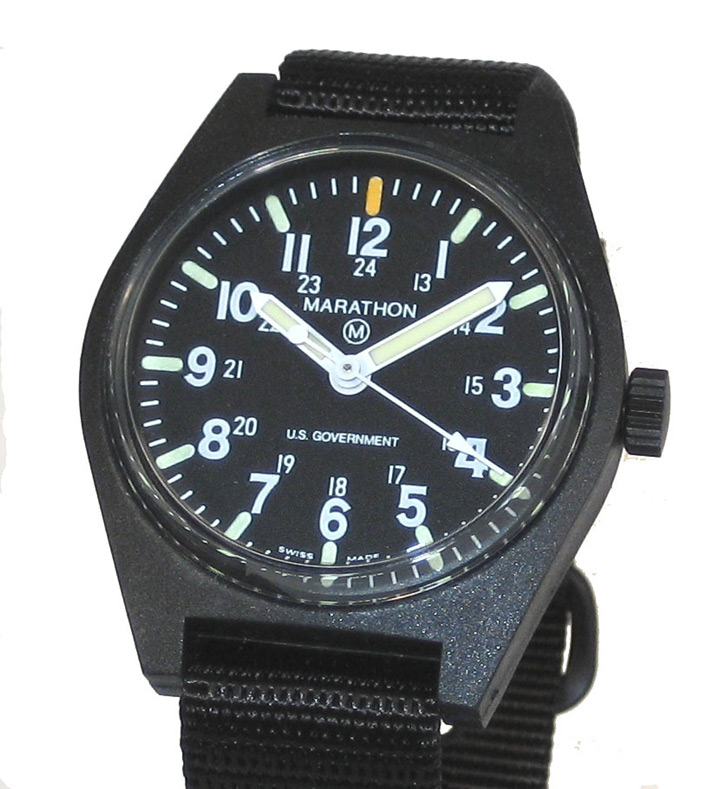
Marathon WWW194009
Mid price watches that encompass all the above qualities and also add a bit more aesthetic appeal, build quality and additional functions:
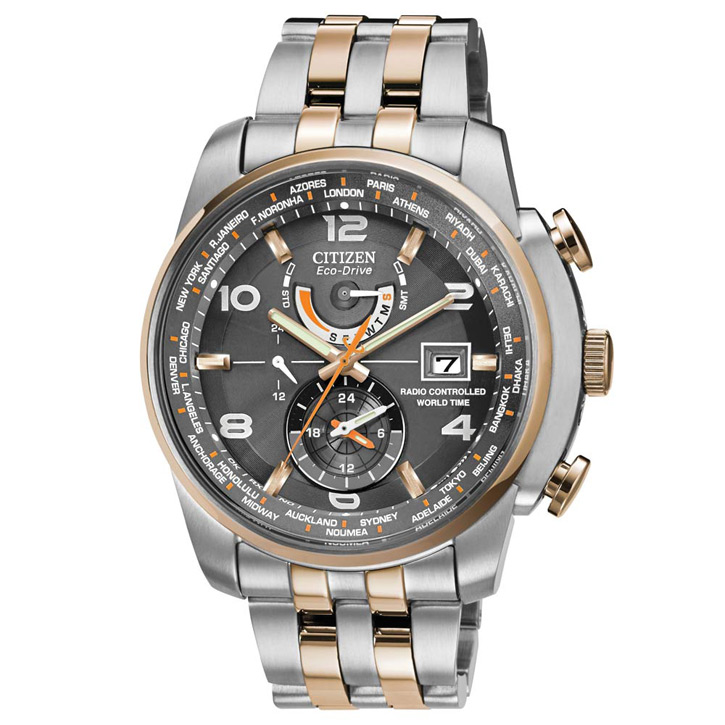
Citizen World Time
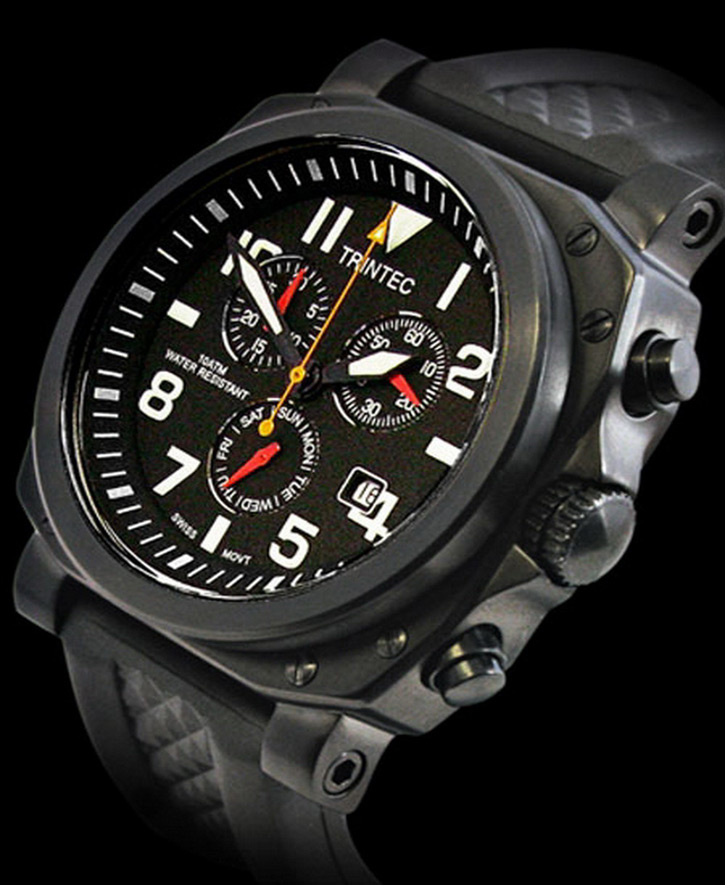
Trintec Zulu-05 Chronograph
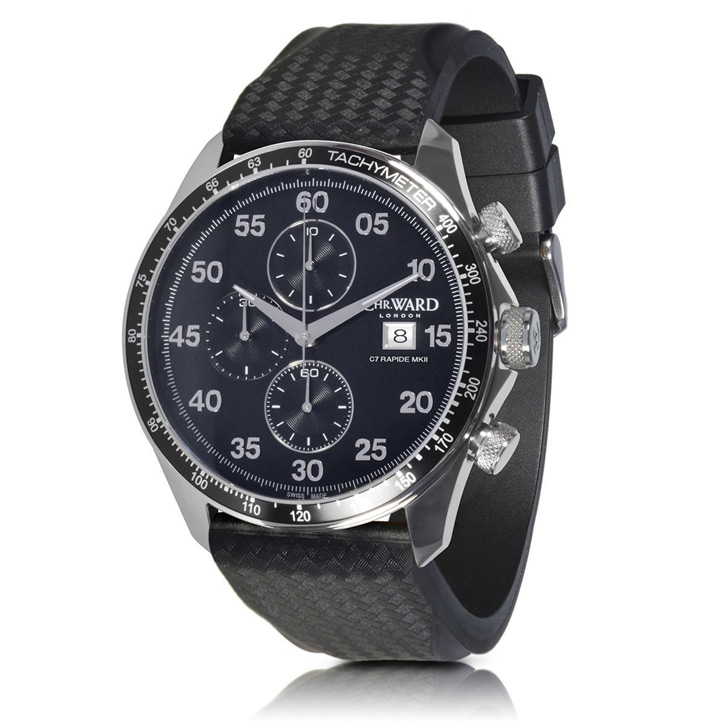
Christopher Ward C7 Rapide MKII
Military/Pilot/Aviator watches that fall into the quasi-military or tactical category:
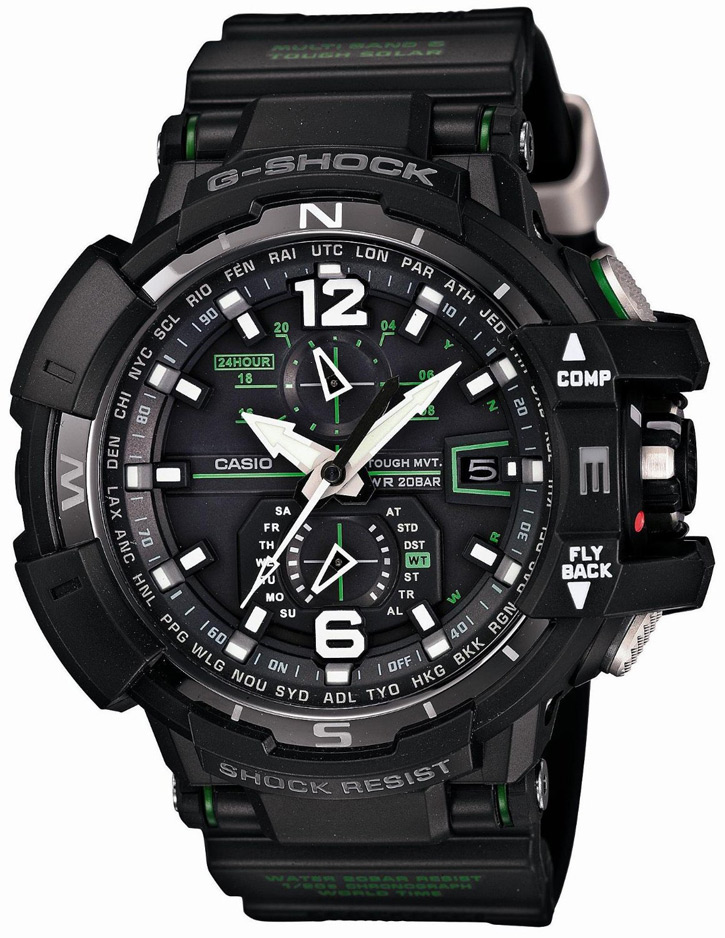
Casio G-Shock GW-A 11

MTM Black Patriot
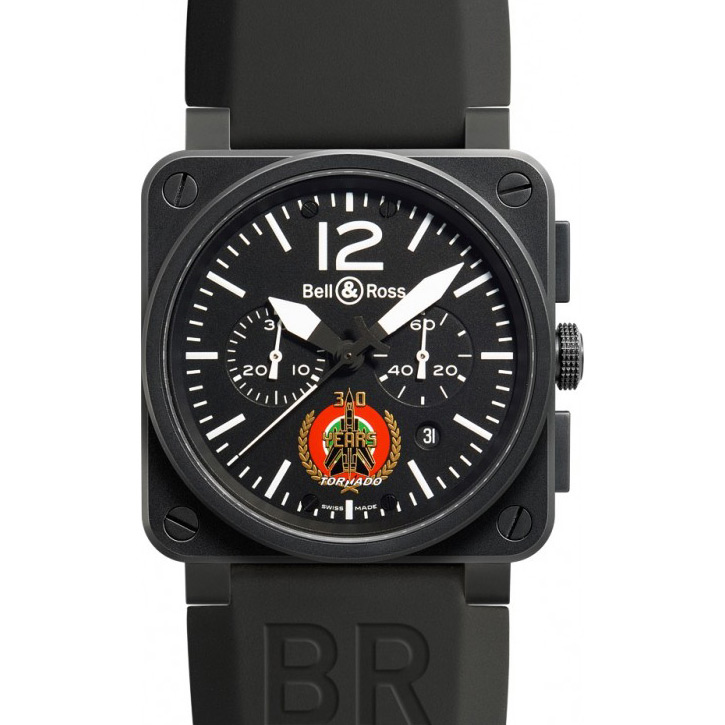
Bell & Ross Aviation BR03-94 Tornado
High end watches with high end prices that begin to represent upper tiers of the watchmaker’s art:
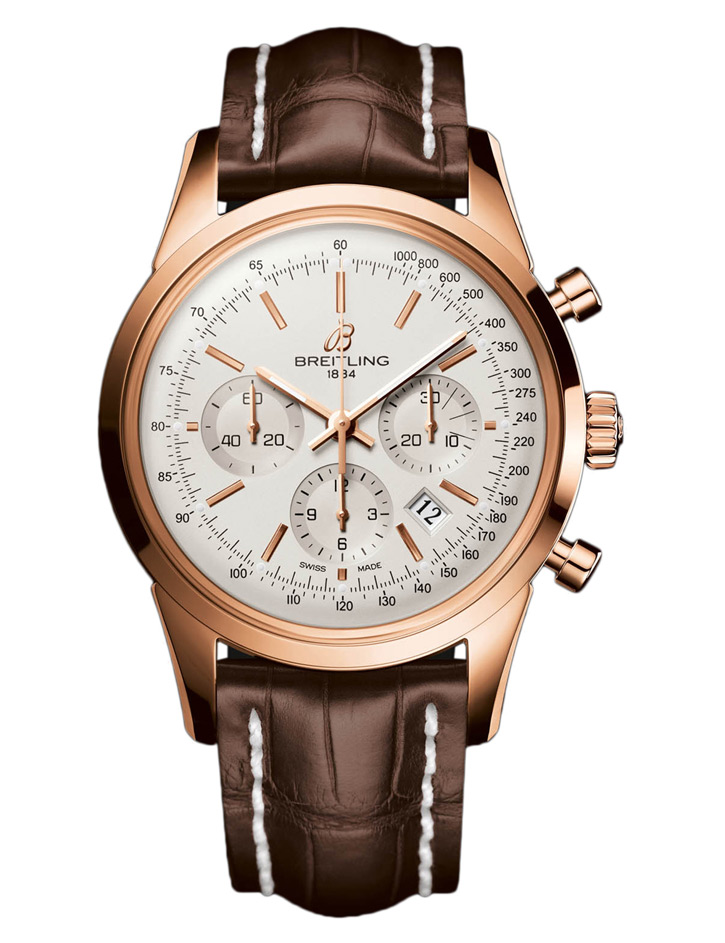
Breitling Transocean
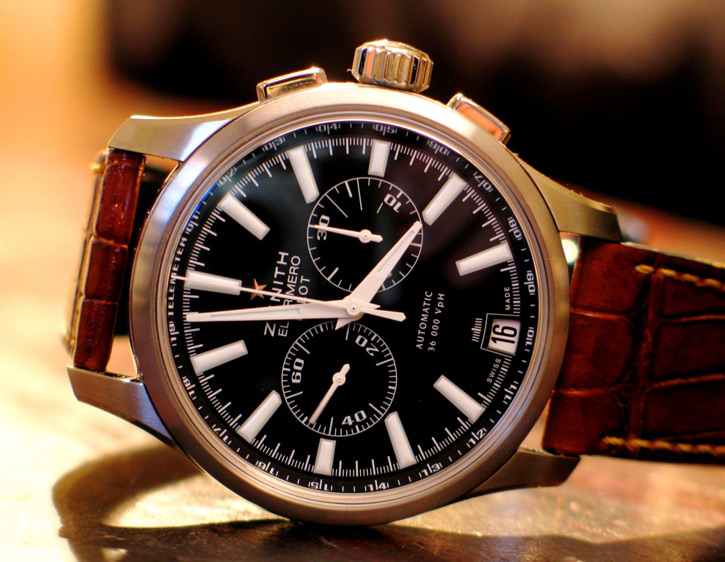
Zenith Pilot
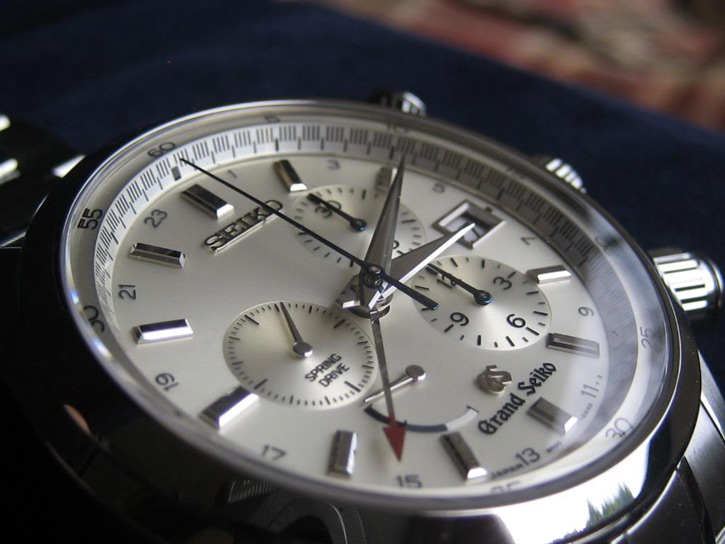
Grand Seiko Spring Drive
Ah, … Rolex
You may note that I did not include a Rolex in the last category.
This is because, in my opinion, Rolex watches have overly benefited from great PR that has imparted a reputation well out of proportion to their actual quality relative to many other marques in the same price ranges.
Be not mislead; Rolex makes very fine watches. I actually have a vintage Turn-o-graph model that I find very attractive and an excellent watch. But – apples to apples- were I to consider spending four or five figures on a wristwatch, I would look elsewhere at more interesting, more attractive and more innovative and probably better built brands.
I feel the same way about Brooks Bros., Jack Daniels, Dunhill and Cuban Cohibas. So sue me.
Well …
Now that I have offended my editor and alienated most of the pipe smokers, whiskey drinkers, cigar smokers, BB and Rolex fans, I shall move on to the second segment of this, likely my last column!
Pipes on active Duty
This month we celebrate the signing of a document that explained to the world why the Second Continental Congress voted to approve a resolution of independence on 2 July, 1776. This resolution and it’s explanation in the Declaration of Independence severed the thirteen British colonies here from the lawful sovereign rule of King George III.
This, of course, is considered the beginning of the American Revolution, which was at the time a bloody, protracted and illegal insurrection against the lawful ruling government.
I put it this way, which is quite accurate, to point out that the liberties, rights and relative freedoms we hear so much about around the first week of July were dearly purchased with the blood of brave patriots and the severe suffering of a whole society.
To fit in with this month of celebration, I wanted to take a very brief look at pipe smoking in the military and try to direct attention to a rare and precious group of individuals that, I believe, deserve our gratitude and profound respect; the G.I. pipe smokers.
A Military Tradition
Most pipe smokers know of the famous military (usually) men from our history and past conflicts. Generals Douglas MacArthur, Dwight Eisenhower, George Patton, Chesty Puller, Admiral William Halsey, Jr. and General Curtis Lemay were all pipe smokers. In fact Admiral "Bull" Halsey was quoted as saying: " I never trust a fighting man who doesn’t smoke or drink."
These famous and oft revered figures seem to have a cloak of nostalgia about them which can distance us from the life and death actions and events that underpin their fame. Blood and sacrifice were not their stock in trade, but were inevitable elements in their lives and stories. I wish here to call attention to those contemporaneous service personnel that carry on this great tradition of pipe smoking as they too make their sacrifices as they accept their sacred charge.
There, but for the Grace of God …
I recently had the privilege to speak to Ron Long, a member of the Southern Fried Pipe Club. Ron served as a combat medic in Iraq during his time with the Army National Guard. His job was to give medical treatment to those in need and also to carry an M-4 rifle and employ that when needed. Ron told me he had a regular cadre of pipe smokers in his unit and whenever there was a few minutes of down time they would gather to enjoy a bowl of tobacco and the camaraderie only pipe smokers know.
While smoking with his buddies, they all enjoyed a sense of calm and welcome separation from the immediate environs and it’s attendant stresses. Ron said, " It felt like a bit of home. It was relaxing and took our minds back to enjoyable moments back home."
He began to gain enthusiasm as he recounted how they all eagerly looked forward to those times when they might snatch a moment or two to share a bowl together during a stop in transit to a mission or when they returned to camp. I imagine the long practiced rituals of our beloved hobby created a brief oasis of calm and normalcy during what could only be a deadly and nerve wracking experience. I ardently wish that those intent on placing a prohibition on smoking in the armed services could sit down with Ron Long and his pipe buddies and understand the benefits they gain from the pipes they smoke whilst on active duty.
Below are a few photos of Sgt. Ron Long and other contemporary G.I.’s enjoying a bowl of tobacco "at war". Thanks to them all; those men and women that are sworn to sustain and protect our Republic.
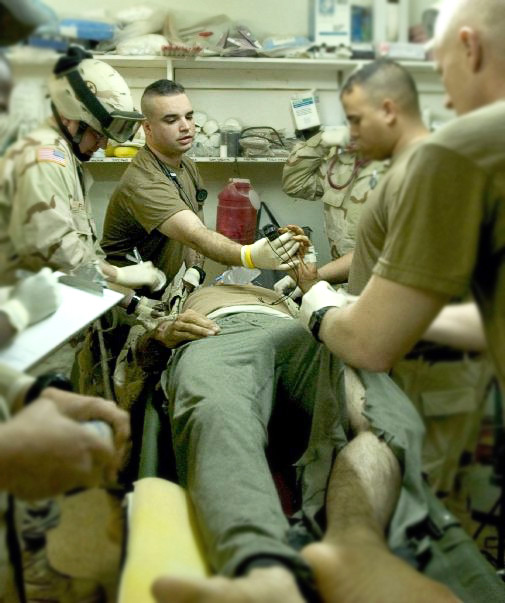
Sgt. Ron Long, USA
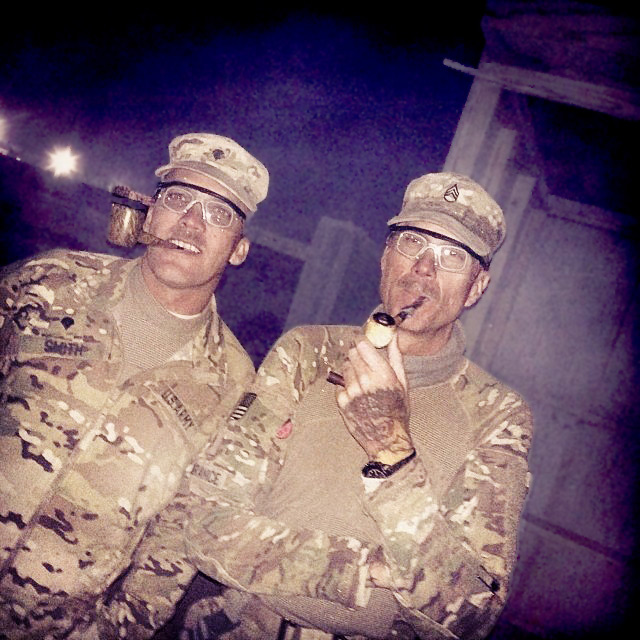
(R) Sgt. Craig Severance, USA
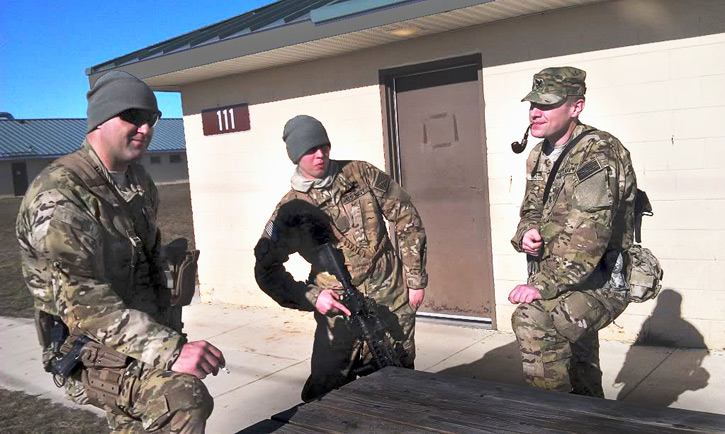
(R) Petty Officer Martin Volz, USN
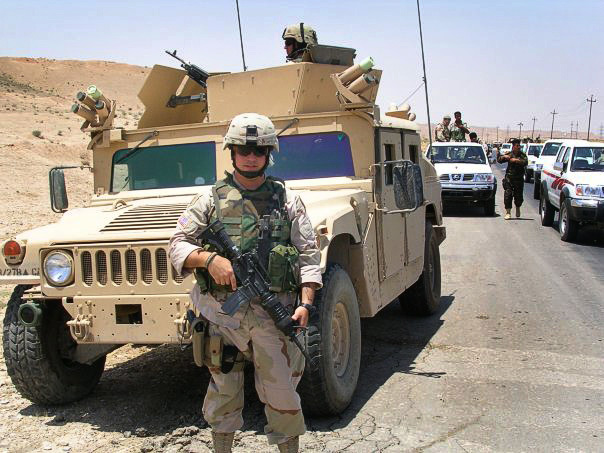
Sgt. Ron Long, USA
the Gentleman Smoker’s tip
This may seem not so much a tip as recommendations, but it is in keeping with the foregoing subject matter. The tip portion is advice I received from my father Harry.
Harry was an avid and recognized amateur historian and he routinely read four to six books a week, often lecturing on new acquisitions at the Norfolk Public Library. Given the thousands of worthy titles available to the reader and that few of use have the time or ability to buzz saw through two or three hundred volumes a year as he did, this was his strong suggestion: choose the Pulitzer Prize winners first. I’ve never been let down by this advice and so, in keeping with the martial theme herein, I have two books to recommend.
The first is The Guns of August by Barbara Tuchman. This is a Pulitzer Prize winner that focuses on the first month of WWI. It is fascinating, smoothly lucid and really gives a good background to the current geo-political state of the world as well as revealing the arrogance and ignorance of the various heads of state and members of the ruling class during that time. It also has an eerie similarity to today’s world.
The second work, In the Company of Soldiers is by Pulitzer winning author Rick Atkinson. He was a staff writer and senior editor at the Washington Post for twenty years and is a renown military historian and author. It is his account of his reporting while embedded with the 101st Airborne in Iraq in March of 2003, the Second Gulf War invasion. He literally was at Gen. David Patraeus’ elbow everyday from just before crossing the border from Kuwait into Iraq until the fall of Baghdad.
This account reads clean, clear and fast with humor, keen observations and gives great insight into the upper command levels of our modern military’s combined forces approach to war fighting. You also get an interesting portrait of a fascinating contemporary commander: Maj. Gen. David Patraeus.
Though not a pipe smoker, I think "Bull" Halsey would trust him.
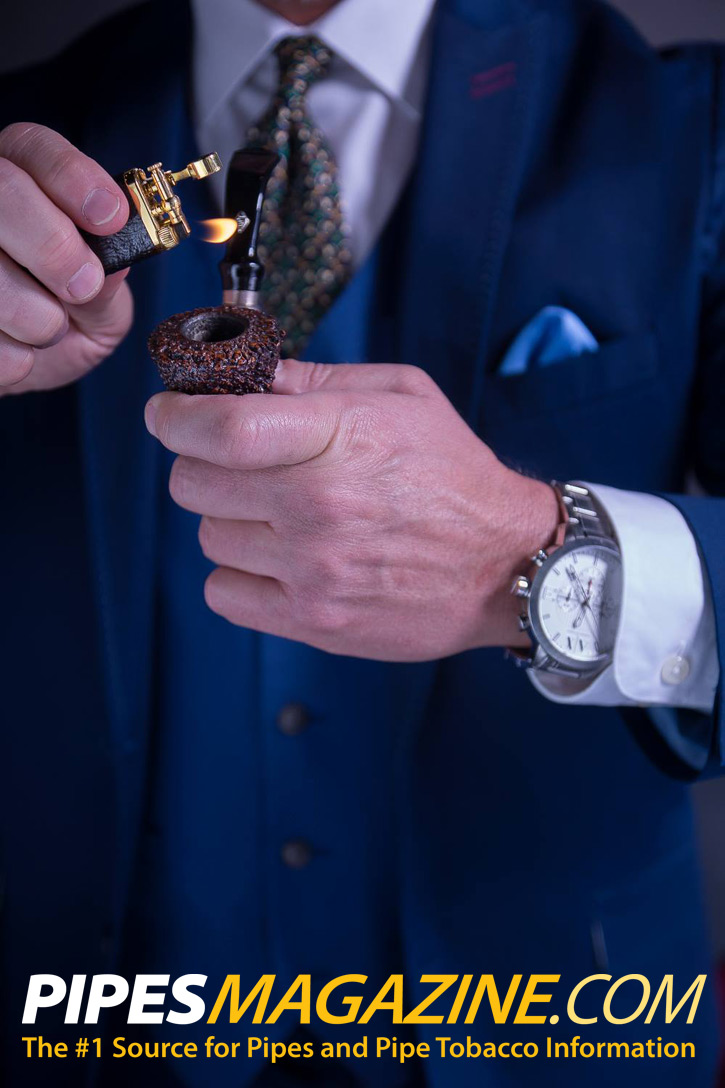
|
Steve Morrisette is an artisan pipe maker, relentlessly snappy dresser, and self-confessed Virginia gentleman. He makes artisan pipes for discerning collectors, and scours the internet and shops of all types seeking information and fine garments, hats, watches, shoes, and jewelry – anything related to the gentleman’s lifestyle. Steve also spent several decades as a working drummer and photographer/photojournalist. You can find his pipes at www.smpipes.com, and catch his style photos and latest pipes on Facebook and Instagram. |









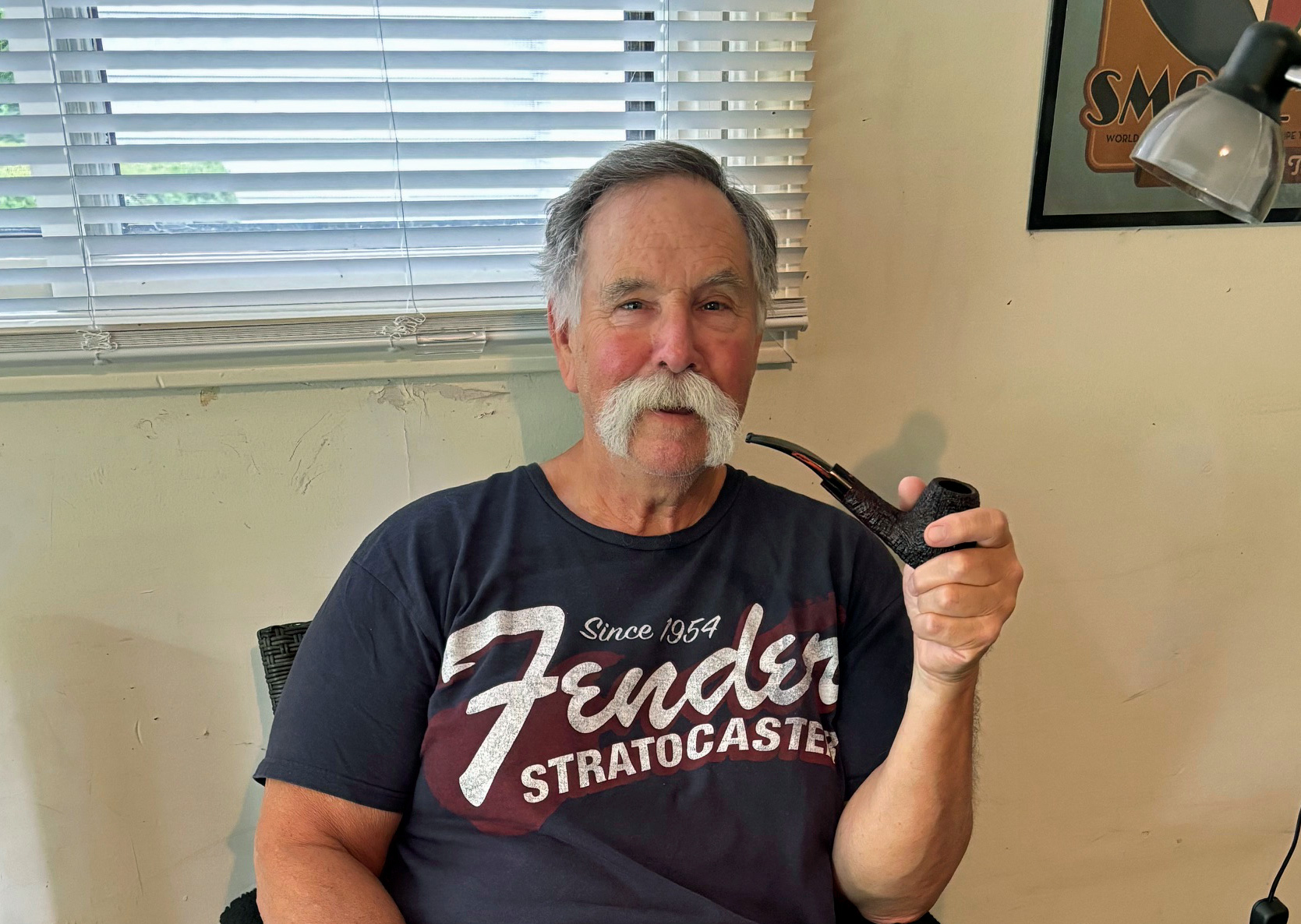
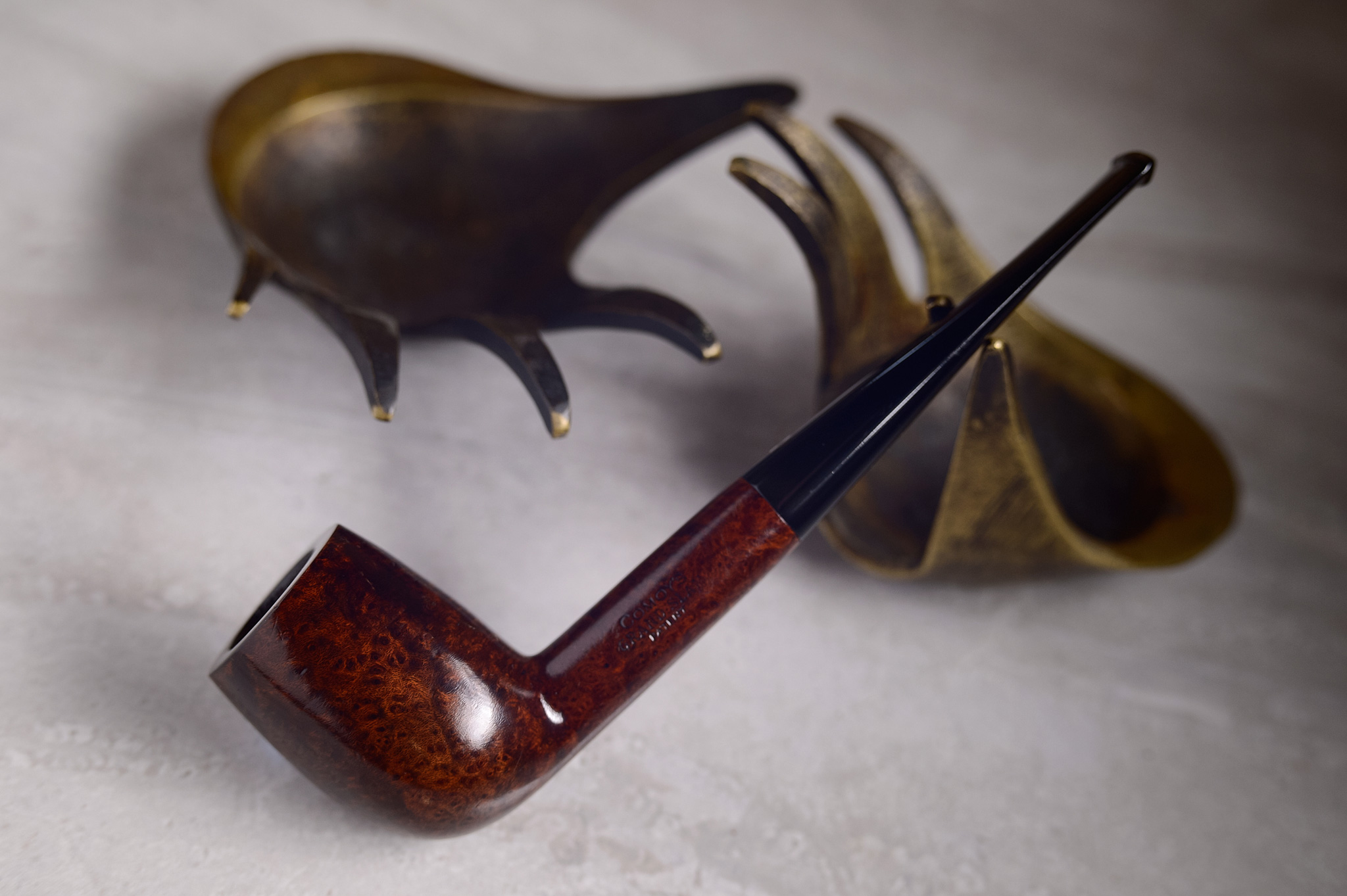

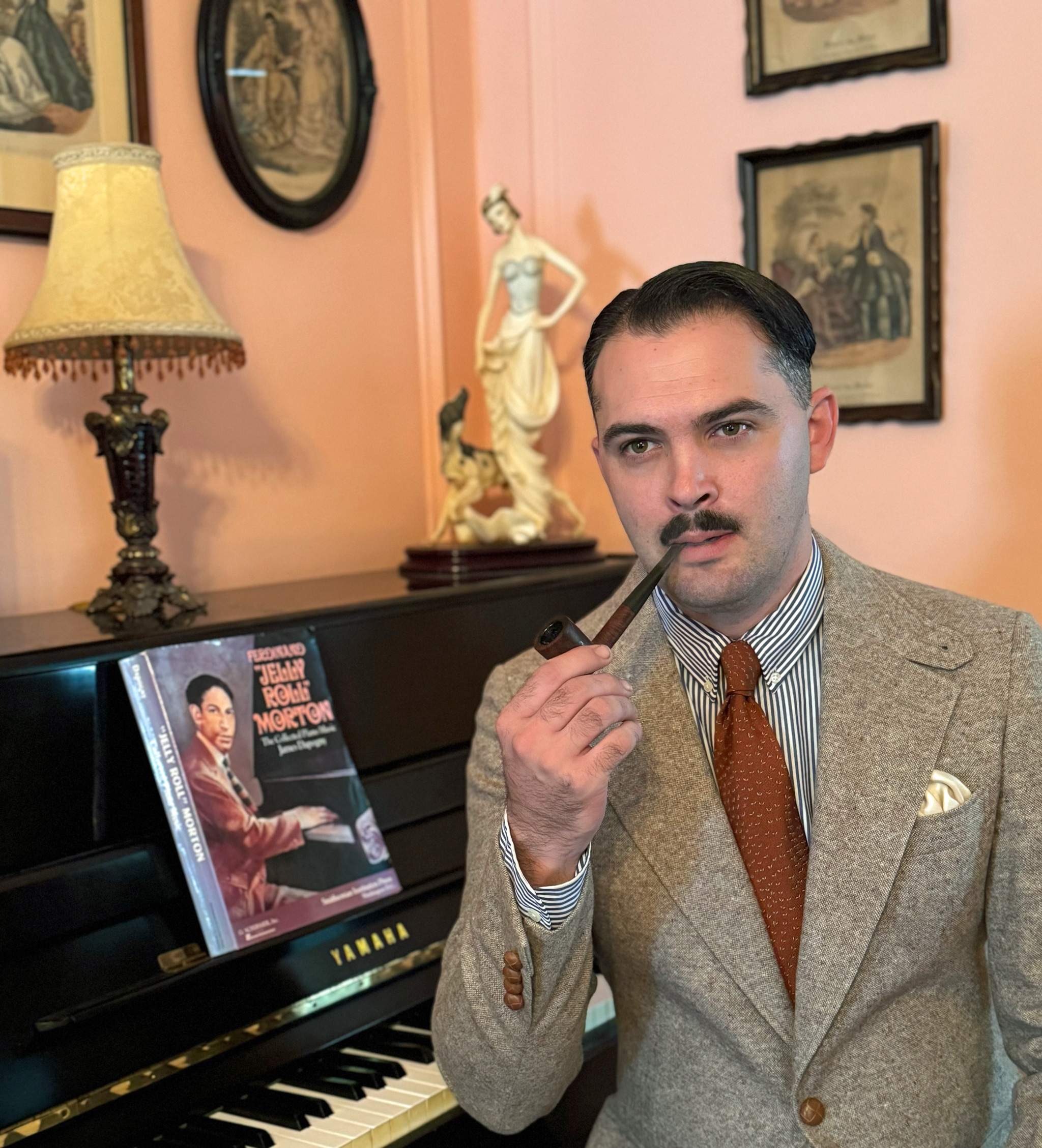
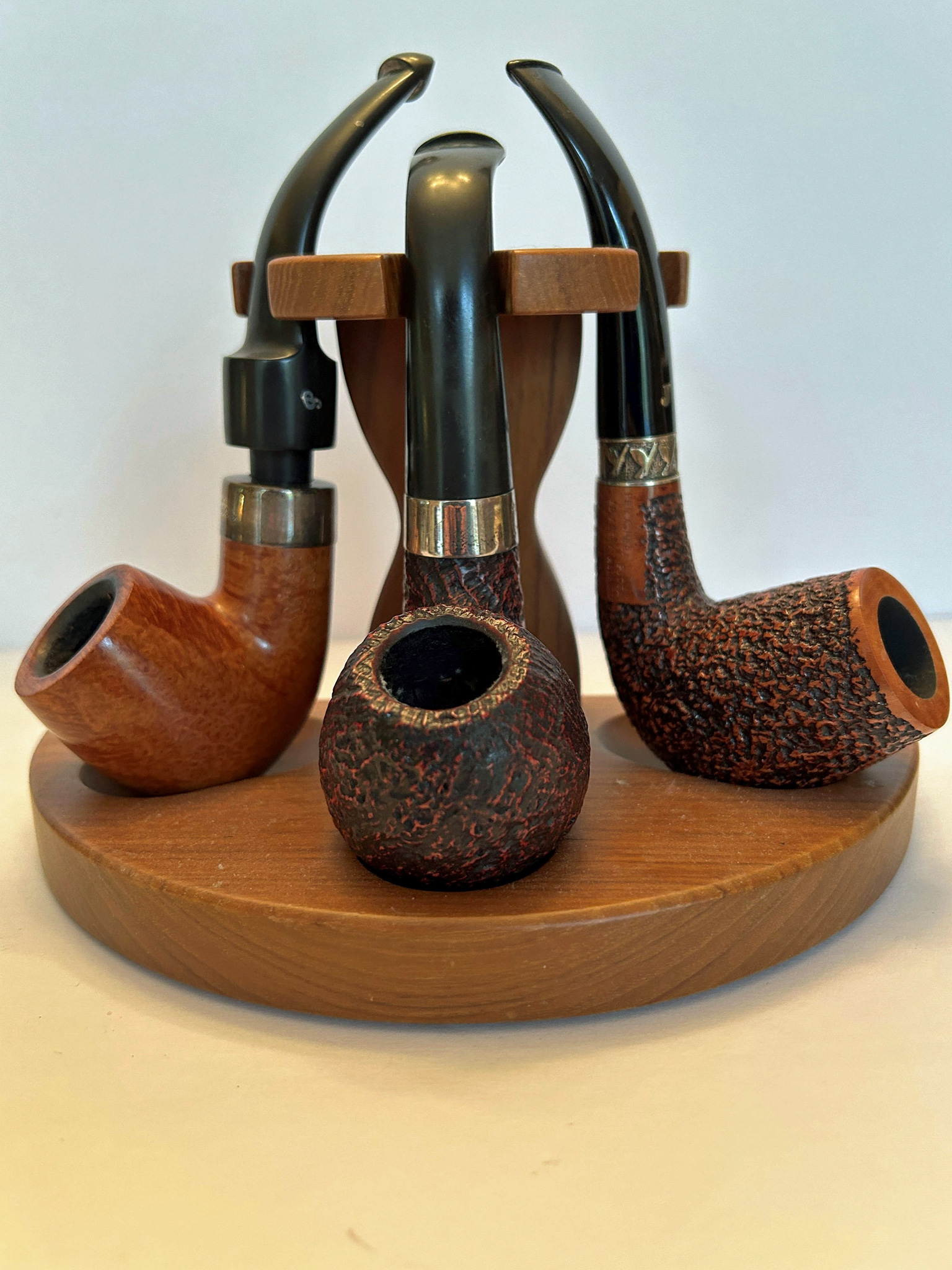






I admit to being a watch guy. So many young people today don’t wear watches at all; relying on their cell phones for time. They’re really missing out on the beauty of a watch. I feel naked with out one. My Breitling Chronograph and Omega Speedmaster “Moon Watch” are formal dress pieces. My “other” 25 watches are more for everyday wear but still important to me.
Thanks for an entertaining piece about this most masculine adornment.
What a great article. I love watches, but could never bring myself to spend more than about $3k on one. I had always drooled at the thought of owning an IWC watch but, yeesh, the price tag. For our 10 anniversary last year my dear wife bought me an IWC Portugese Yacht Club Chronograph. I am just mesmerized by this watch. I know what they are worth, but I have never discussed with the wife what she paid. I feel I am better off not knowing, lol. Best gift I ever got – not just because it is a fabulous time piece, but because who it was from.
I love watches, but could never bring myself to spend more than about $3k on one. I had always drooled at some of the IWC watches, but was scared off by the price tags. For our tenth anniversary last year, my beloved wife surprised me with an IWC Portuguese Yacht Club Chronograph. I know what they were worth, but we have never discussed what she paid for that watch. I feel I am better off not knowing, lol. Great article.
Great column today, love your writing and the subjects you approach. I love watches though I cannot claim to be any sort of connoisseur, but I can truly appreciate a good time piece. My grandfather had many watches and I inherited one of his pocket watches when he passed. It is one of my favorite heirlooms.
Those watches you posted were mostly nothing short of amazing. I am a big fan of the simple, clean aviator watches. I love a good, crisp, clean watch. I was never into the abundance of displays on watches, but to each their own, I can appreciate them though on an objective level.
This is an exceptionally fine read, SteveM. I need to get the Omega that my dad left for me fixed. It would fit in well with my Brooks Brothers suit, Dunhill pipe and tobacco, and a glass of Jack Daniels. 😉
hp
les
Your article confirms what a friend in the jewelry/watch business told me years ago. I wanted to buy a Tag Heuer. He persuaded me to go with a Citizen because they are dead reliable and pocket book friendly. I bought a Eco-Drive Chronograph in titanium. Been wearing it since 2006 without fail even with an occasional but unintended blow to the frame. YMMV.
This article would have been a lot more useful and authoritative if it had included photographs of aviator watches. With the exception of one or two on the very fringes of “Fliegerville”, the pieces featured are a very long way from classic brilliance of the IWC Mark XV or Damasko DA36.
Fourteen of the watches pictured are NOT Aviators.
I implore the writer to undertake more research before writing any more articles.
I went [have been going] through my watch phase over at least a decade, but in the last four years or so I graduated from High St window shopping to consulting online forums and technical reviews. For me, a mechanical watch is a lovely thing, but I usually wear G-Shocks. I have found that ruggedness, legibility and accuracy are rapidly becoming far more relevant than “provenance” and “finishing. Don’t get me wrong, I’d love to be own a VC or JLC one day, but as a tool for telling the time, I sincerely believe that a G-Shock 5600 series is about as perfect as it gets.
happypiper, I believe the writer mentioned early in the article that his intent was to write about aviator/pilot “style” watches.
Very enjoyable and a great overview of the genera.
Thanks very much to all for the kind words and suggestions.
LES: I encourage you to indeed get the Omega serviced. Omega watches
are great timepieces, and represent a shrewd value among better watches of
a higher price point.
Happypiper: I have to admit that I strongly considered including many more images
of watches like the various offerings from the marques you mention as wells as
Messerschmitt, Junghans, Archimede,Stowa, Steinhart, Fortis, Glycine, Sinn,
Traser, Kremke, my Revue Thommen Airspeed as well as,
the dozens of other makers’ pilot/aviator watches.
But, the article ran close to 4K words as written, so more images and
cut lines would have made it untenable.
I also feel that most of the readers here would not
see all the subtle differences in these very similar
watches.
I agree that I am ignorant of much of the vast history and specs and
other elements of the subject. I stated that at the outset.
I do think that including the Trintec, made by the company
that innovated the cockpit clock, plus two Bell & Ross offerings,
the Seiko ” Flightmaster”, Breitling Navitimer and the
Seiko 5 qualifies as inclusion of some few pilot / aviator watches.
I do thank you for your input and appreciate your pout of view.
In writing these pieces, I make errors and misjudgments. I do the best I
can to entertain and inform my readers. I also sweat
the fact that I know I will, on occasion, not please or deliver
in ways I had hoped.
Again, thanks to all that posted responses.
I am always grateful and appreciative of any and all feedback.
Cheers to all,
Steve Morrisette
the Gentleman Smoker
The Omega Speedmaster is not technically a “pilot/aviator” watch, it’s an automobile racing watch. The fact it was worn by astronauts owes to politics and marketing (is there really much difference between those terms?). Just like Hasselblad is not a “pilot/aviator” camera although it was chosen (in modified form) by NASA. Those uninitiated wishing to purchase a Speedy Moon should be aware that there are 2 models, one is a self-winder with a sapphire crystal, and the other is a hand-wound with a plastic “hesalite” crystal. The latter was the only configuration used by NASA, because it could withstand the pressures and gravity issues without stopping or the crystal cracking.
I thought this was a fun read, and I thank you for the effort you put into it. Checking out Pulitzer Prize winners first sounds like good advice when overwhelmed by the available choices. Thanks.
Shutterbug, you are certainly correct. The column is about the style of watches most might term pilot/aviator/military.
In truth, they are all part of the subset of Sport watches. I doubt anyone except those already in the know would seek out the hesalite model. Neither is inexpensive even on the used market. My favorite is actually the old AM/PM Mk40.
I had a Schumacher w/”carbon fiber” dial for a while and let it go. i cringe when I see what it is worth now!
The ‘Blad was indeed an interesting choice, though it can be said they are robust and have great glass.
Thanks for your welcome and informed comments.